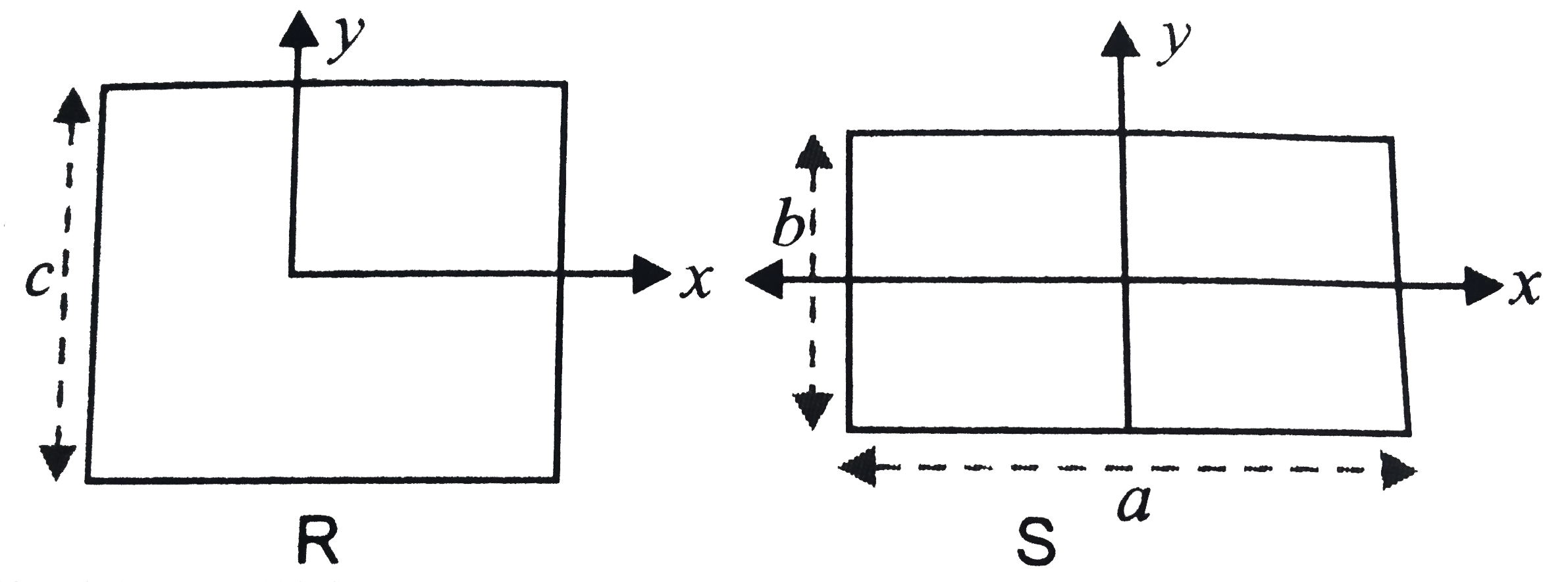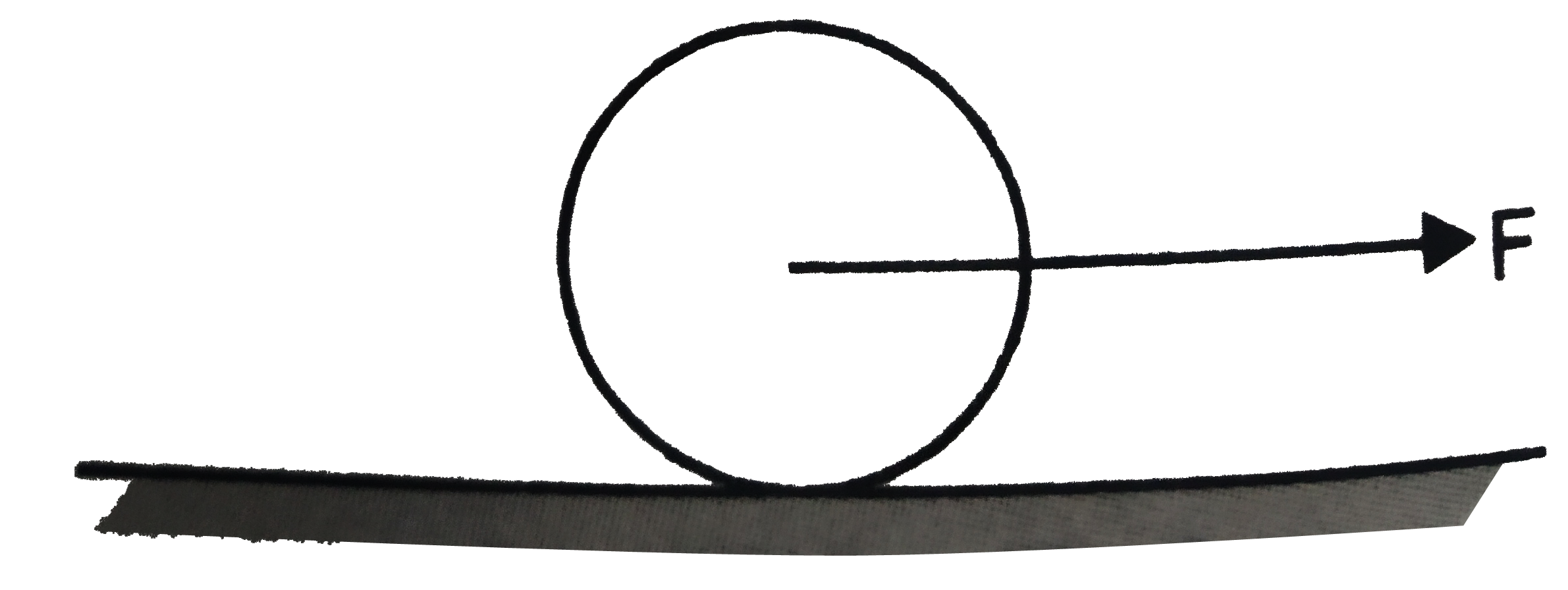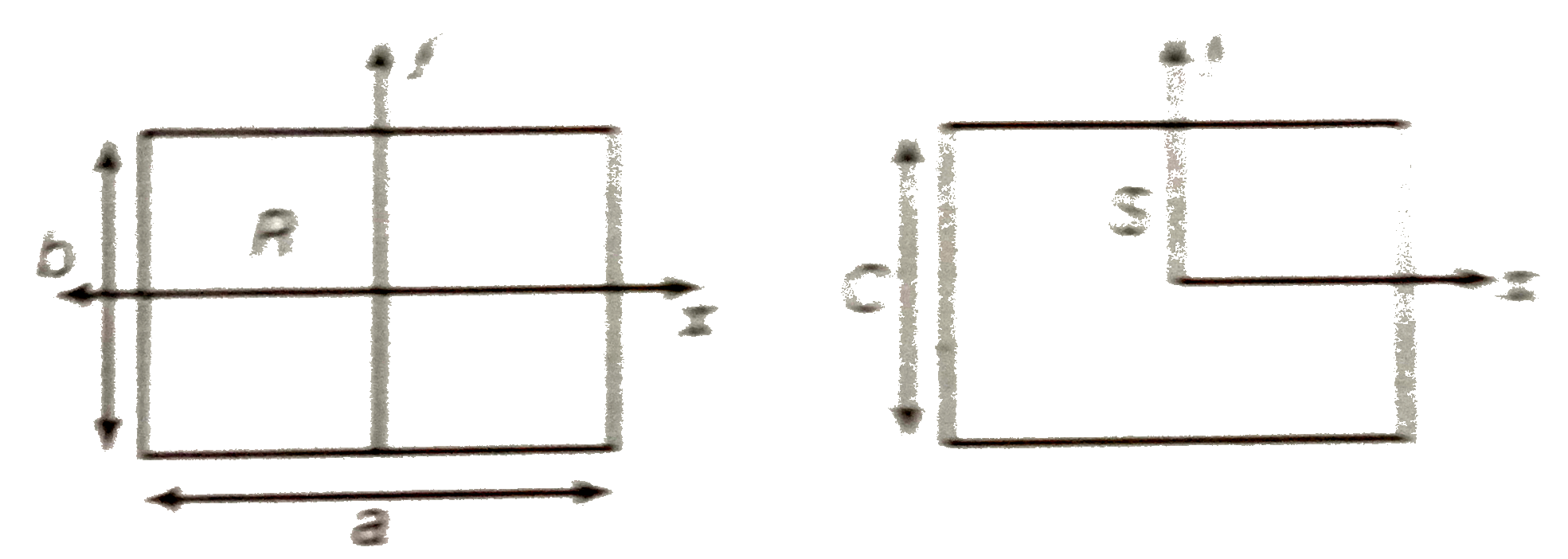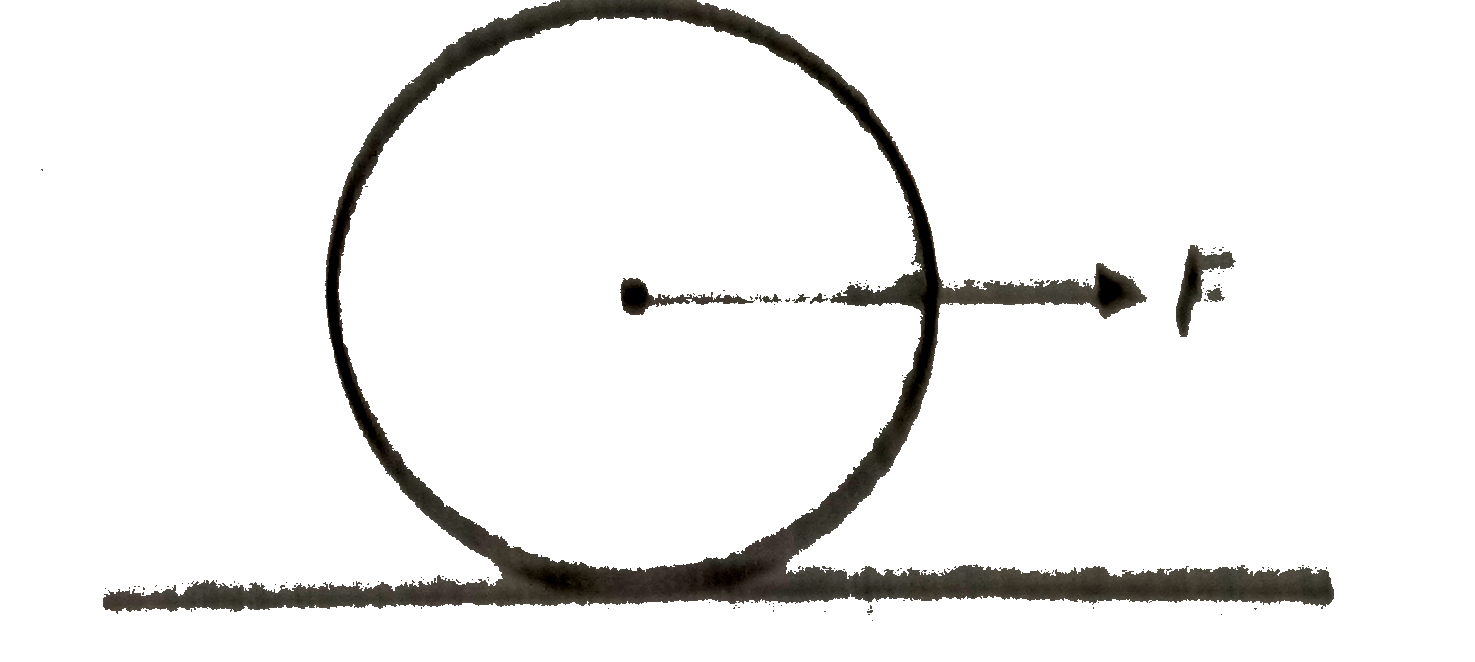Complete Solutions to Long answer type questions of chapter SYSTEM OF PARTICLES AND ROTATIONAL MOTION of Class 11 book with complete answers and questions
| Class 11 | PHYSICS |
| Chapter | SYSTEM OF PARTICLES AND ROTATIONAL MOTION |
| NCERT EXEMPLAR | Long answer type questions |
| Number Of Questions | 12 |
| Academic Year | 2023-24 |
Find the centre of mass of a unifrom (a) half-disc,(b) quarter-disc.
View SolutionTwo discs of moments of inertia `I_(1) and I_(2)` about their respective axes (normal to the disc and passing through the centre), and rotating with angular speed `omega_(1) and omega_(2)` are brought into contact face to face with their axes of rotation coincident . What is the angular speed of the two-disc system ?
View SolutionA disc of radius `R` is rotating with an angular speed `omega_(0)` about a horizontal axis. It is placed on a horizontal table. The coefficient of kinetic friction is `mu_(k)`.
(a) What was the velocity of its centre of mass before being brought in contact with the table ?
(b) What happens to the linear velocity of a point on its rim when placed in contact with the table ?
(c ) What happens to the linear speed of the centre of mass when disc is placed in contact with the table ?
(d) Which force i sresponsible for the effects in (b) and (c ).
(e) What condition should be satisfied for rolling to begin ?
(f) Calculate the time taken for the rolling to begin.
View SolutionTwo cylindrical hollow drums of radii `R and 2R`, and of a commom height h, are rotating with angular velocities `omega` (anti-clockwise) and `omega` (clockwise), respectively. Their axes, fixed are parallel and in a horizontal plane separated by `(3R + delta)`. They are now brought in contact `(delta rarr 0)`.
(a) Show the frictional forces just after contact.
(b) Identify forces and torque external to the system just after contact.
(c ) What would be the ratio of final angular velocities when friction ceases ?
View SolutionA uniform square plate `S (side c)` and a unifrom rectangular plate `R(side b,a)` have identical areas and mass [Fig.]
Show that
(i) `I_(xR)//I_(xS) lt 1`, (ii) `I_(yR)//I_(yS) gt 1`, (iii) `I_(zR)//I_(zS) gt 1`.

View SolutionA unifrom disc of radius `R`, is resting on a table on its rim. The coefficient of friction between disc and table is `mu` Fig. Now the disc is pulled with a force `F` as shown in the Fig. What is the maximum value of `F` for which the disc rolls without slipping ?


View SolutionFind the centre of mass of a uniform (a) Half - disc,(b)quarter-disc.
View Solutiontwo disc of maments of inertia `I_(1) and I_(2)` anout their respective axes (normal to the disc and passing through the centre ) , and rotating with angular speed `omega_(1) and omega_(2)` are brought into contact face to face with their axes of rotation coincident .
View SolutionA disc of radius R is rotating with an angular `omega_(0)` about a horizontal axis it is placed on a horizontal table . The coefficient of kinetic friction is `mu _(k)`
(a) what was the velocity of its centre of mass before being brought in contact with a the table ?
(B) what happens to the linear velocity of a point on its rim when placed in contact with the table ?
(c ) what happes to the linear speed of the centre of mass when disc is placed in contact with the table ?
(d) which force is responsible for the effects in (b) and (C ) ?
(e) wht condition should be sattisfied for rolling to begin ?
(f) Calculate the time taken for the rolling to begin .
View Solutiontwo cylindrical hollow drums of radii R and 2 R, and of a common height h , are rotating with angular velocities `omega` (anti- clockwise ) and `omega` (clockwise ) , respectively , their axes , fixed are parallel and in a horizontal plane separated by by 3R + `delta` , they are now brought in contact `(delta to0)`
(A) show frictional forces just after contact .
(B) identify forces and torque external to the system just after contact ,
(c) what would be the ratio of final of final angular velocities when friction ceases ?
View SolutionA unifrom sphere plate 5 (side c) and a unifrom recangluer plate R (sides B,a) have identical areas and masses .

Show that
(A) `I_(xR)//I_(xs)lt1` (B) `I_(yR)//I_(ys)gt1` ( C ) `I_(zR)//I_(zS)gt1`
View SolutionA unifrom disc of radius R , is resting on a table on its rim . The coeffficient of friction between disc and table Is `mu ` (figure ) ,Now the disc is pulled with a force F as shown in the fiogure ,What is the maximum value of F for which the disc rolls without slipping ?

View Solution
Long answer type questions questions and complete solutions for chapter SYSTEM OF PARTICLES AND ROTATIONAL MOTION of NCERT PHYSICS (ENGLISH) of Class 11